| View previous topic :: View next topic |
| Author |
Message |
Elise

Joined: 22 Dec 2009
Posts: 243
Location: New York State



|
 Posted: Sep 01, 2011 13:53 Post subject: Mineral specimens with inclusions - (28) Posted: Sep 01, 2011 13:53 Post subject: Mineral specimens with inclusions - (28) |
|
|
I wondered if any members might have an interest in sharing images of intact mineral specimens with interesting inclusions, especially the whole specimen accompanied by a detail of the inclusion(s). I think that seeing inclusions in the context of its host crystal for a variety of minerals would be fascinating - even if it is just an arrow pointing to the location of the inclusion or a description of its relationship to the host crystal structure. We've had some separate threads about specific species or types of inclusions, such as the helical one https://www.mineral-forum.com/message-board/viewtopic.php?t=1337 but maybe a thread of a more general nature would grow. I am thinking of Alfredo's quip to me which went something like "inclusions are just minerals with expertly trimmed matrix" ... or something like that.
What prompted this inquiry was that I stayed up half the night studying a collection of several dozen inclusion specimens which I only had access to for less than 24 hours before I had to return the box back across the country. Part of the fascination for me with inclusion science is learning how something came to be - studying one 400 micron mineral inclusion in detail has recently taken me to both Brookhaven and Argonne synchrotrons ( that might be considered overkill!) - there was not enough time with this collection to work out what was going on crystallographically in the pieces, which as you can imagine, is more difficult to do after its transformation by the lapidary artist. Unfortunately, most specimens I see are already fashioned into a bead or gem or sculpture etc - I am curious if there is a faction of mineral collectors who specialize in unadulterated included minerals - or maybe "rough & cuts" (or at least a polished window through which get a better view).
I am already starting this off badly - I don't have a natural specimen to share for the fashioned ones I am posting below; I can only imagine how the crystal may have appeared -- I just thought it was neat and hope that Jordi doesn't evict me as a crystal chopper. These are 2 pieces I examined last night which made me wish I could have seen the original crystal, though it is fun to also figure it out just using the microscope: The "polka dots" are centered around the c axis of the quartz, roughly indicated by my attempts to insert a line, and are apparently formed under the rhombehedral faces, 6 total with one cab showing a second set below. I assume these are phantom formations and the "blooms" are hematite - each oval is composed of hundreds of colorful concretions. Has anyone seen natural quartz crystals with these within? I think it would be a spectacular sight!
Cheers!
Elise
| Description: |
Quartz with inclusions
Unknown locality
each approximately 12mm at base |
|
| Viewed: |
107355 Time(s) |

|
_________________
Elise Skalwold |
|
| Back to top |
|
 |
Antonio Alcaide
Site Admin

Joined: 23 Aug 2009
Posts: 314
Location: Spain



|
 Posted: Sep 01, 2011 15:23 Post subject: Re: Mineral specimens with inclusions Posted: Sep 01, 2011 15:23 Post subject: Re: Mineral specimens with inclusions |
|
|
Great idea!! Elise: a general thread for minerals with inclusions. Recently, at the Spanish Forum, a member confessed his passion for inclusions. Despite the Spanish I give the link (interesting pictures of included new fluorites from Asturias, Spain):
https://www.foro-minerales.com/forum/viewtopic.php?p=63100#63100
I shall try to post another example later.
Regards
_________________
Life is the shortest crystal |
|
| Back to top |
|
 |
Duncan Miller

Joined: 25 Apr 2009
Posts: 138
Location: South Africa



|
 Posted: Sep 02, 2011 01:58 Post subject: Re: Mineral specimens with inclusions Posted: Sep 02, 2011 01:58 Post subject: Re: Mineral specimens with inclusions |
|
|
Elise
Good idea for a thread, but, if the haematite spots are arranged symmetrically around the c-axis they could be portions of a haematite skin coating the original rhombohedral faces. Clever cutting would preserve these as more or less round spots. I have seen similar stones produced from haematite-coated so-called 'Orange river' quartz from Namaqualand, South Africa. In that case they are not inclusions, but overgrowths. Are your spots embedded, or exposed?
Duncan
|
|
| Back to top |
|
 |
am mizunaka

Joined: 09 Apr 2010
Posts: 2215
Location: USA



|
 Posted: Sep 02, 2011 02:58 Post subject: Re: Mineral specimens with inclusions Posted: Sep 02, 2011 02:58 Post subject: Re: Mineral specimens with inclusions |
|
|
Aquamarine with Ferrocolumbite inclusion.
| Description: |
Aquamarine
Shigar Valley, Skardu District, Baltistan, Pakistan
5.7 x 2.5 cm. |
|
| Viewed: |
107240 Time(s) |
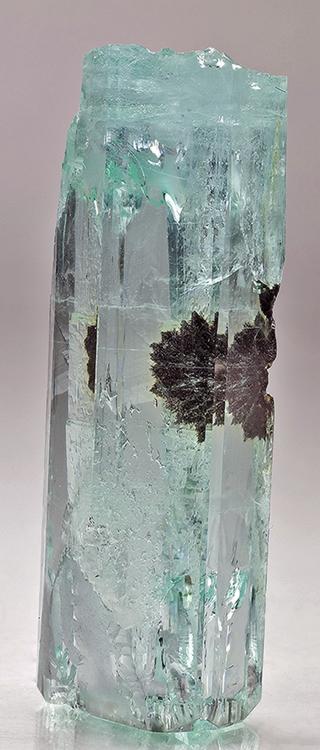
|
| Description: |
Ferrocolumbite
Shigar Valley, Skardu District, Baltistan, Pakistan |
|
| Viewed: |
107216 Time(s) |
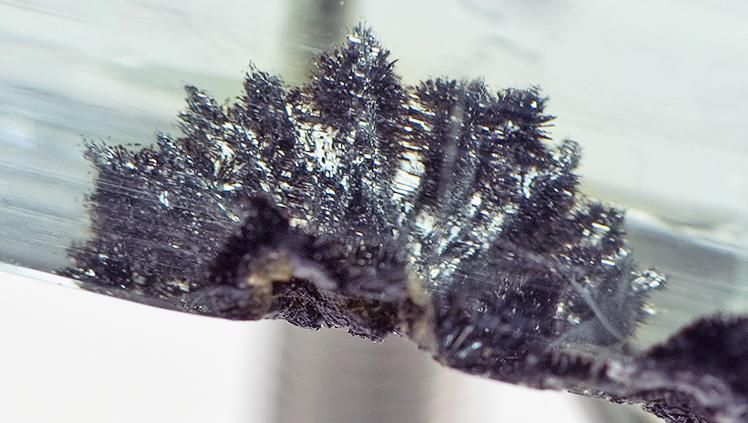
|
|
|
| Back to top |
|
 |
John S. White
Site Admin

Joined: 04 Sep 2006
Posts: 1298
Location: Stewartstown, Pennsylvania, USA



|
 Posted: Sep 02, 2011 05:31 Post subject: Re: Mineral specimens with inclusions Posted: Sep 02, 2011 05:31 Post subject: Re: Mineral specimens with inclusions |
|
|
I have many examples, here is one of my favorites. I do not have a photo of the whole specimen, but will take one and post it later.
| Description: |
quartz with cookeite and apatite
Peralhas, Rio Grande do Norte, Brazil
Whole specimen is 8 cm across
Photos by Russell Feather |
|
| Viewed: |
107285 Time(s) |
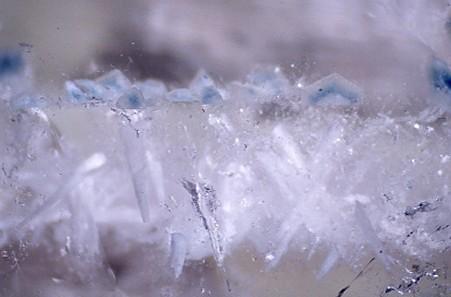
|
| Description: |
close-up of the apatite
Parelhas
the apatites are about 1 mm in size |
|
| Viewed: |
107192 Time(s) |
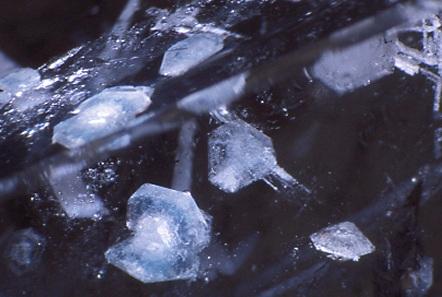
|
_________________
John S. White
aka Rondinaire |
|
| Back to top |
|
 |
John S. White
Site Admin

Joined: 04 Sep 2006
Posts: 1298
Location: Stewartstown, Pennsylvania, USA



|
 Posted: Sep 02, 2011 05:57 Post subject: Re: Mineral specimens with inclusions Posted: Sep 02, 2011 05:57 Post subject: Re: Mineral specimens with inclusions |
|
|
Here is the whole piece. All of the side faces have been polished, otherwise you would not be able to see the inclusions. The cookeite xls are all on one plane and the apatite xls, which came later, are on another parallel plane. Again the piece is 8 cm across.
| Description: |
quartz with cookeite and apatite inclusions
Parelhas, Brazil |
|
| Viewed: |
107289 Time(s) |
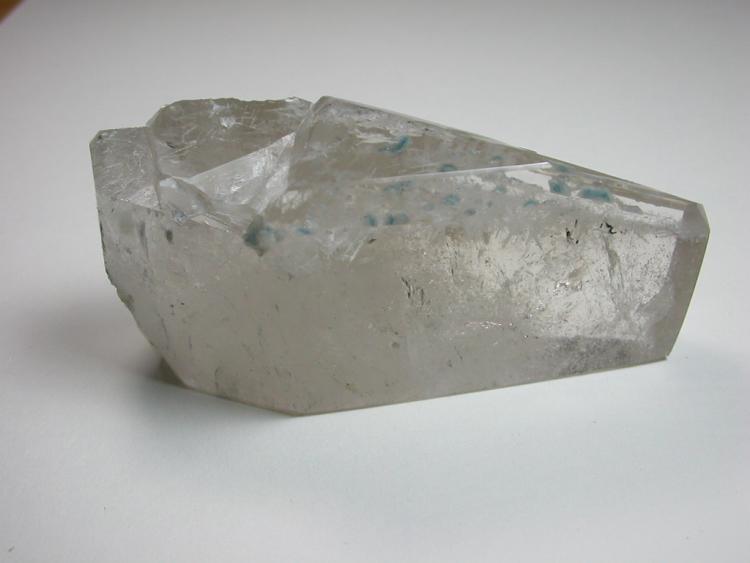
|
_________________
John S. White
aka Rondinaire |
|
| Back to top |
|
 |
silvio steinhaus

Joined: 15 Jan 2011
Posts: 51
Location: São Paulo



|
 Posted: Sep 02, 2011 09:09 Post subject: Re: Mineral specimens with inclusions Posted: Sep 02, 2011 09:09 Post subject: Re: Mineral specimens with inclusions |
|
|
Agate with Goethite inclusions.
As the total sample is 3 x 2 cm and is cut cabochon
| Description: |
Agata with Goethite inclusions.
Rio Grande do Sul, Brazil
The inclusion measures 1 X 1 cm |
|
| Viewed: |
107134 Time(s) |
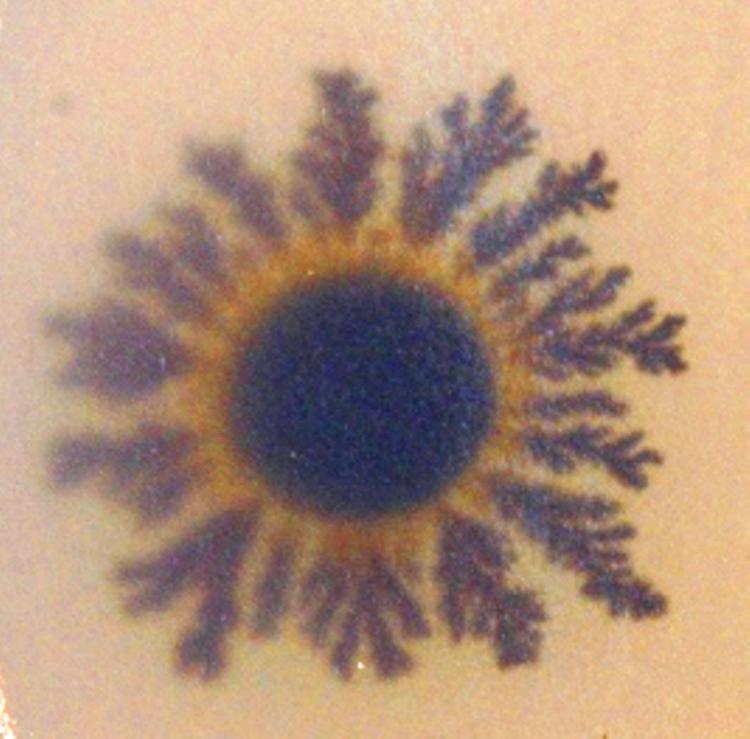
|
|
|
| Back to top |
|
 |
Elise

Joined: 22 Dec 2009
Posts: 243
Location: New York State



|
 Posted: Sep 02, 2011 11:54 Post subject: Re: Mineral specimens with inclusions Posted: Sep 02, 2011 11:54 Post subject: Re: Mineral specimens with inclusions |
|
|
| Antonio Alcaide wrote: | | Great idea!! Elise: a general thread for minerals with inclusions |
I was hoping that would be the answer...and was going to ask if agates count, but then Silvio let the sun shine in....
Quartz and calcite are the two minerals I can't get enough of. Below are 3 quartz crystals with variations on the rhombehedral faces, the one in the middle I chose as an example of almost equal r and z faces so I could try to explain what I thought about the polka dot cabs (see next post). The one on the right has a nice two phase inclusion (see close-up). I believe the sphere is a gas bubble with smootch (technical term) adhering to its surface -- a fun one to use in demonstrations as it is easily seen moving around. I believe this and the middle crystal are from Nepal - purchased long ago at the Syracuse show and have used it so much that I no longer have documentation attached.
John, I love that specimen and the view of the apatite crystals in cross-section. Do they break the surface and stick out? or is that a sideview of a plane within?
Elise
| Description: |
Quartz
Left, unknown; Right two Nepal?
Largest (right) 55 mm |
|
| Viewed: |
107155 Time(s) |
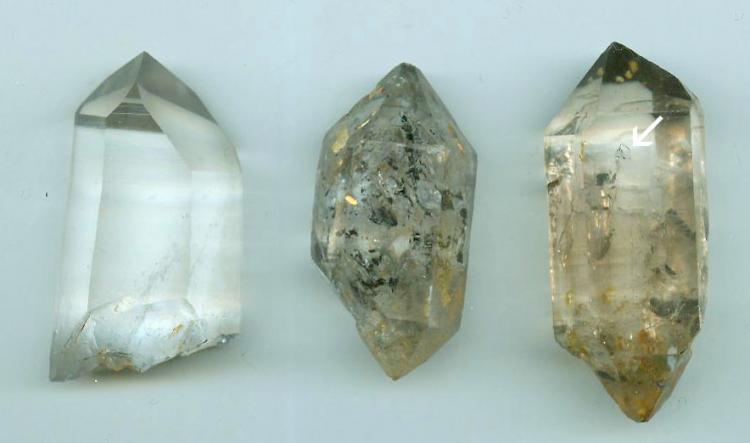
|
| Description: |
| Close-up of two-phase inclusion shown in quartz crystal at right (arrow), same orientation. |
|
| Viewed: |
107101 Time(s) |
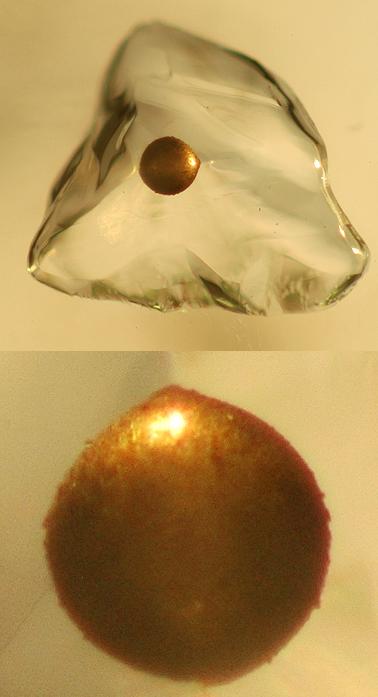
|
_________________
Elise Skalwold |
|
| Back to top |
|
 |
silvio steinhaus

Joined: 15 Jan 2011
Posts: 51
Location: São Paulo



|
 Posted: Sep 02, 2011 11:59 Post subject: Re: Mineral specimens with inclusions Posted: Sep 02, 2011 11:59 Post subject: Re: Mineral specimens with inclusions |
|
|
Quartz with inclusion of green Uvite
| Description: |
Quartz with inclusion of green Uvite
Serra das Éguas, Brumado (Bom Jesus dos Meiras), Bahia, Brazil
Cristal - 27 X 70 X 23mm / Uvite -the largest 8 X 10 X 8mm |
|
| Viewed: |
107089 Time(s) |
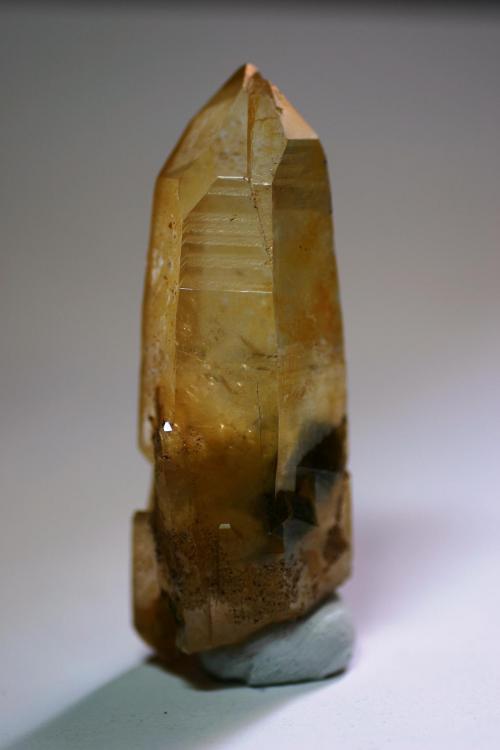
|
|
|
| Back to top |
|
 |
silvio steinhaus

Joined: 15 Jan 2011
Posts: 51
Location: São Paulo



|
 Posted: Sep 02, 2011 12:03 Post subject: Re: Mineral specimens with inclusions Posted: Sep 02, 2011 12:03 Post subject: Re: Mineral specimens with inclusions |
|
|
Quartz with inclusion of green Uvite
| Description: |
Quartz with inclusion of green Uvite
Serra das Éguas, Brumado (Bom Jesus dos Meiras), Bahia, Brazil
Quartz - 30 X 75 x 25mm |
|
| Viewed: |
107141 Time(s) |
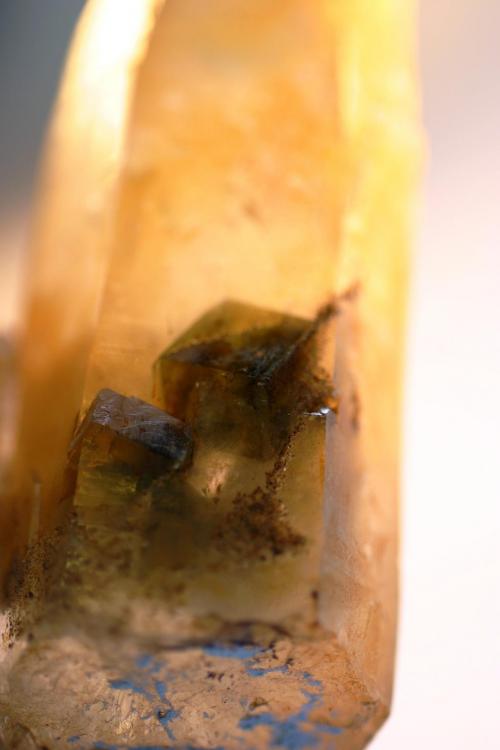
|
|
|
| Back to top |
|
 |
silvio steinhaus

Joined: 15 Jan 2011
Posts: 51
Location: São Paulo



|
 Posted: Sep 02, 2011 12:09 Post subject: Re: Mineral specimens with inclusions Posted: Sep 02, 2011 12:09 Post subject: Re: Mineral specimens with inclusions |
|
|
Amethyst with inclusion of Cristobalite
| Description: |
Amethyst with inclusion of Cristobalite
Rio Grande do Sul, Brasil
Amethyst with 25 X 45 X 28mm - 3 x 3mm Cristobalite
|
|
| Viewed: |
107197 Time(s) |
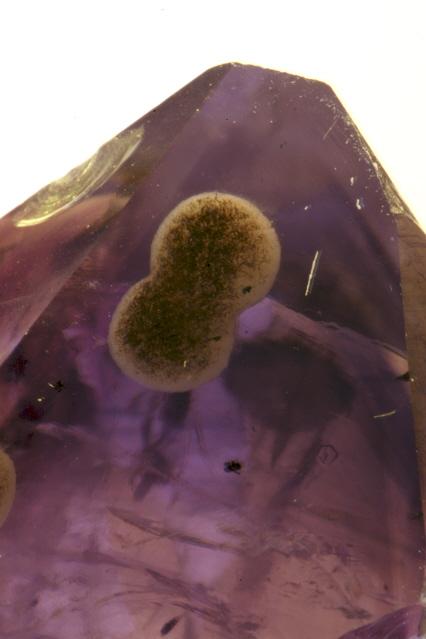
|
|
|
| Back to top |
|
 |
Elise

Joined: 22 Dec 2009
Posts: 243
Location: New York State



|
 Posted: Sep 02, 2011 12:12 Post subject: Re: Mineral specimens with inclusions Posted: Sep 02, 2011 12:12 Post subject: Re: Mineral specimens with inclusions |
|
|
| xenolithos wrote: | | Elise Good idea for a thread, but, if the haematite spots are arranged symmetrically around the c-axis they could be portions of a haematite skin coating the original rhombohedral faces. Clever cutting would preserve these as more or less round spots. I have seen similar stones produced from haematite-coated so-called 'Orange river' quartz from Namaqualand, South Africa. In that case they are not inclusions, but overgrowths. Are your spots embedded, or exposed?Duncan |
Hi Duncan, I hope you can laugh with me (not at me) re my kitchen table rendering of phantoms -- the blooms look more egg-shaped then they actually are because of the perspective; they are tilted towards the c axis and are exactly parallel, stacked one above the other - I believe parallel to the original rhomb faces. There may have been ones on the original crystal face surface; otherwise the first stack is below the surface of the cabochon (the lapidary ground and polished the terminus off until left with the layer of blooms). In the drawing, I tried to show how I thought the original crystal might have looked; the blooms under the faces hidden behind are seen in side view (through the visible faces) to show that they are just below the surface. Sorry this isn't very accurate, but I hope gives an idea of what I think is going on. I actually think it is probably a mixture of several minerals in the blooms, but did not get that far looking at it yet.
Best wishes,
Elise
| Description: |
|
| Viewed: |
107148 Time(s) |
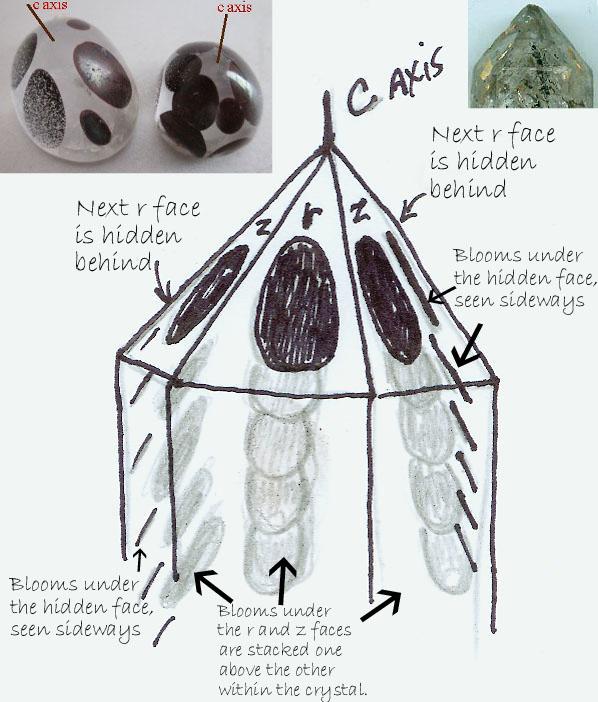
|
_________________
Elise Skalwold |
|
| Back to top |
|
 |
silvio steinhaus

Joined: 15 Jan 2011
Posts: 51
Location: São Paulo



|
 Posted: Sep 02, 2011 12:18 Post subject: Re: Mineral specimens with inclusions Posted: Sep 02, 2011 12:18 Post subject: Re: Mineral specimens with inclusions |
|
|
Calcite with inclusion of goethite on amethyst
| Description: |
Calcite with inclusion of goethite on amethyst
Frederico Westphalen, Rio Grande do Sul, Barsil
Calcite Size - 18 X 20 X 18mm
|
|
| Viewed: |
107164 Time(s) |
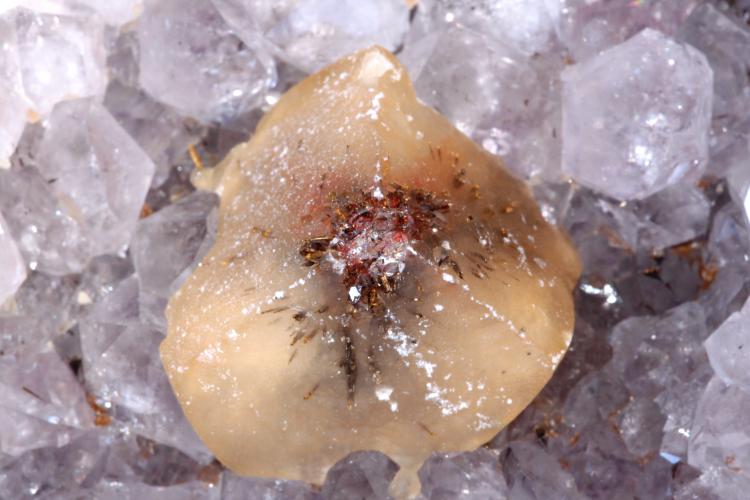
|
|
|
| Back to top |
|
 |
Duncan Miller

Joined: 25 Apr 2009
Posts: 138
Location: South Africa



|
 Posted: Sep 02, 2011 12:37 Post subject: Re: Mineral specimens with inclusions Posted: Sep 02, 2011 12:37 Post subject: Re: Mineral specimens with inclusions |
|
|
| OK Elise - If I have got it right some of the 'blooms' are inside the quartz, not just on the surface. That is not the same as the cabochons I have seen cut from haematite-coated crystals, that have the red/brown patches on the outside. Thanks for the clarification. Duncan
|
|
| Back to top |
|
 |
Peter Megaw
Site Admin

Joined: 13 Jan 2007
Posts: 973
Location: Tucson, Arizona



|
 Posted: Sep 02, 2011 13:22 Post subject: Re: Mineral specimens with inclusions Posted: Sep 02, 2011 13:22 Post subject: Re: Mineral specimens with inclusions |
|
|
Elise, you have tapped into a vein that runs rich and deep in the collector community. Mineral Inclusions is/are actually a very broad category that can be broken down on the basis of inclusion grain size (from coloring agents to mega-inclusions), related versus unrelated species (species sequentially deposited from the same fluid versus accidental inclusions..."dirt" sifted onto crystal faces during growth) and formation mechanism (embracing minerals that exsolve from an earlier phase on cooling versus overgrowths). There are also liquid inclusions (enhydros in rockhound parlance) that also form in a number of ways...and you can carry the study deeper by looking at the "daughter" minerals that precipitate from the trapped liquids!). There are actually several historic threads on FMF that deal with certain specific included materials...from those leading to general coloration...Prase (green quartz colored by very fine-grained amphibole-pyroxene inclusions; to oriented fine-grained inclusions that create optical effects...Asterism (aligned inclusions in corundum...probably an exsolution phenomenon rather than trapping); to slightly coarser inclusions that can be discriminated with the naked eye that give color and/or optical effects...Strawberry quartz (wispy to whiskery hematite inclusions in quartz...see work by co-moderator John S. White)...to oriented mega-inclusions...your hematite plates and the galena phantoms in fluorite below)...to (apparently) randomly oriented mega inclusions ("psilomelane" in quartz below).
I am really glad you are tapping into this lode...
| Description: |
Prase Actinolite (?) inclusions in Quartz
San Antonio Mine, Santa Eulalia, Chihuahua, Mexico
cabinet specimen 10 cm across
"Prase" green quartz colored by inclusions of "actinolite" (green amphibole retrograde product of hydration of original green pyroxene) |
|
| Viewed: |
107043 Time(s) |
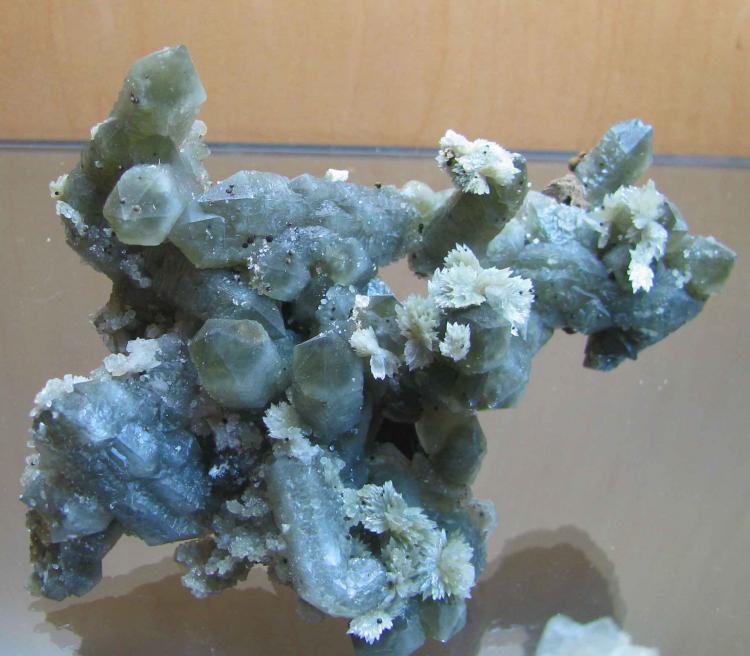
|
| Description: |
Calcite "prase" on grossularite
Naica Mine, Chihuahua, Mexico
minature
Rhombohedral calcite crystal with "actinolte" inclusions. Actinolite has same origin here as in the quartz from San Antonio above. |
|
| Viewed: |
107090 Time(s) |
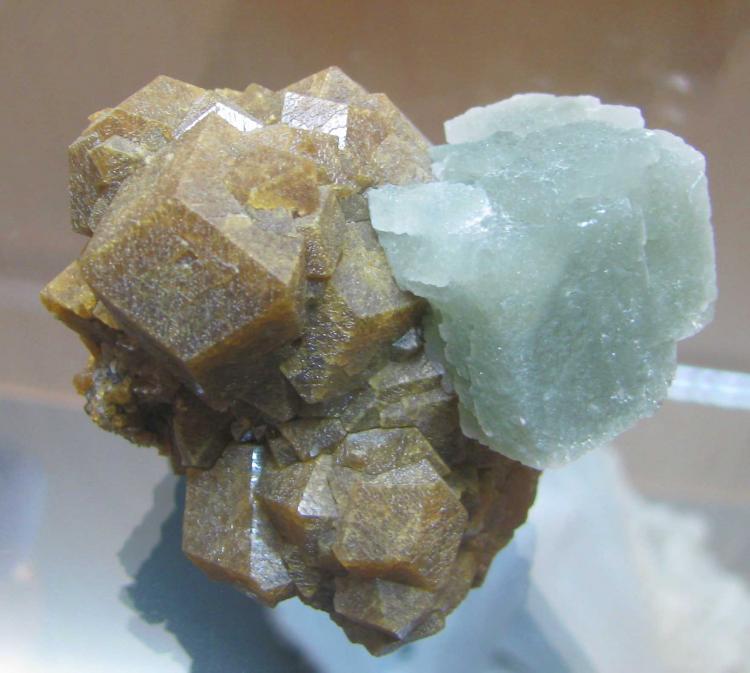
|
| Description: |
The Star of India" corundum with oriented inclusions
India. Photograher unknown
2 cm ?
Beautifully oriented exsolution inclusions in corundum showing orientation and asterism effect |
|
| Viewed: |
107070 Time(s) |
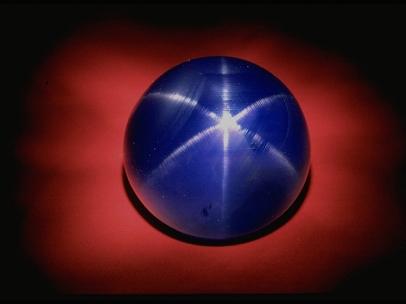
|
| Description: |
Hematite in Quartz
Flor de Esperanza Mine, Uruachic, Chihuahua, Mexico
3 cm field of view
Famous "Strawberry Quartz" of Mexico...see JSW work |
|
| Viewed: |
107090 Time(s) |
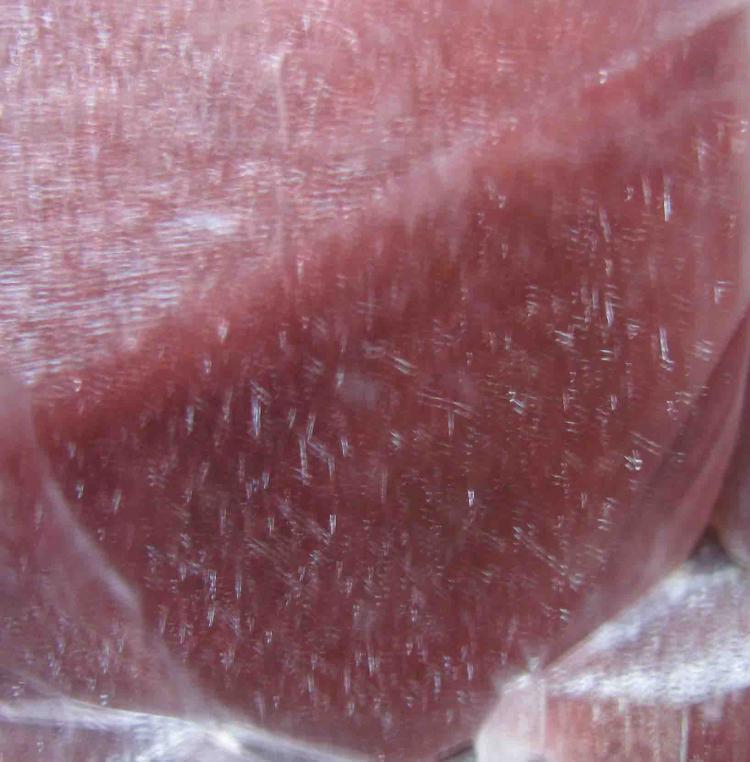
|
| Description: |
Galena in Fluorite
Naica Mine, Chihuahua, Mexico
small cabinet. Jeff Scovil photo, my rock
Phantom created by galena growth on early octahedral growth stage, contrasting nicely with final modified cubic growth. |
|
| Viewed: |
107092 Time(s) |
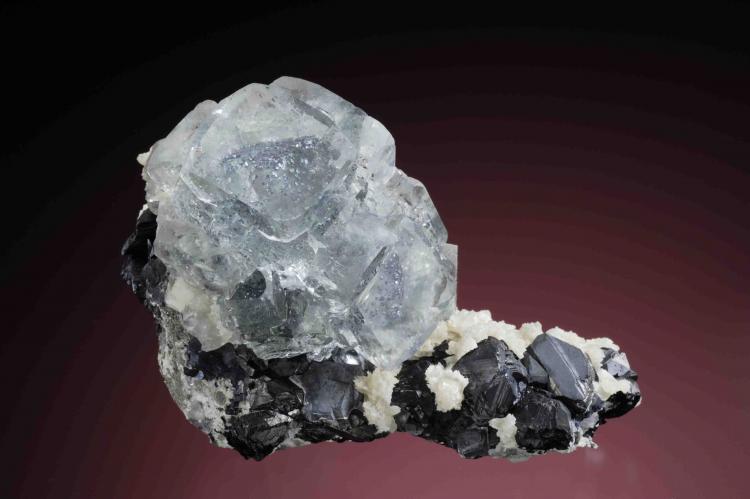
|
_________________
Siempre Adelante! |
|
| Back to top |
|
 |
|





